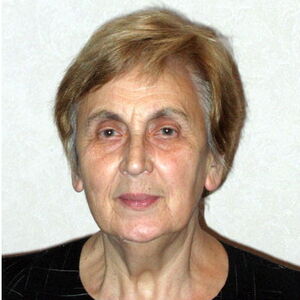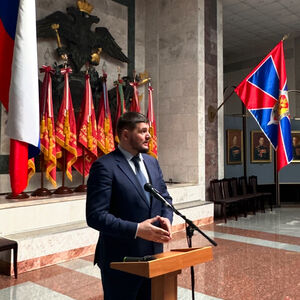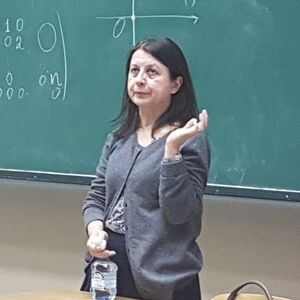Текст ВКР (1194537), страница 9
Текст из файла (страница 9)
The third stage covers the period between the two World Wars. The peculiar feature of this stage is reducing the scales of the international labor migration, including the intercontinental migration and even a remigration from the classical country- immigrant - the USA. It has been conditioned by the following reasons:
1) The consequences of the world economic crisis of 1929-33 shown in growth of unemployment in the developed countries and need in restricting the migratory processes;
2) The closed - totalitarian nature of the USSR development that excluded it from the number of the countries -emigrants of labor force.
The fourth stage began after World War II and proceeds till the present. It is caused by the scientific and technological revolution and monopolization of the international labor markets and received the name "leakage of minds" and by strengthening the state and interstate regulation of labor migration.
Generalizing the characteristic of the regularities of migration of labor force, it is possible to claim that it consists in significant and continuous increase in its scales, attraction to this process of workers of almost all the continents.
Migration flows develop wavy. At first, emigrants- pioneers get their foothold in the new country. Then their relatives and friends arrive there. The wave of emigration gains strength, but through a certain period, it goes by. Then the process repeats: the first wave of emigrants is followed by the second, etc. At the same time, there is dependence between migratory waves and fluctuations of business activity. During a crisis, the flow of emigrants, as a rule, increases and during the economic boom, there occurs an active immigration.
Thus, we have considered the main characteristic features that inherent to this global process. Without doubt, migration as a process has an objective character, and the consequences of this process can be both positive and negative.
1.2 International experience in the labor migration regulation
Regulation of the international flows of labor occurs at the different levels – this is both the national level and the interstate level that is caused by the existing realities of the world economy. In the modern world economic system, the strengthening of migratory processes is caused by a variety of reasons among which we distinguish the following: existence of inter-country differences in the life quality of the population, military operations in a number of regions of the world, unevenness of the economic development of the countries throughout the world, excess the workforce in some countries and lack of highly skilled workers in the others, development of information society, and transport availability, practically, in any corners of the Earth.
The migration policy of the different countries is variable; and it is aimed at regulating the supply and demand on labor market that significantly influences the quality of life of the population [1]; and it is an object of the scientists’ research from various subject domains. These scientists were engaged in studying the various aspects of labor migration, its development and regulation: J. Simon, S. Spatini, P. Stalker, D. Bartram, H. Rasmussen, B. Chisvich, P. Lindert, D. Massey, M. Kritts, I.P. Tsapenko, M. V. Ryazantsev, N. N. Zinchenko, I.M. Vashko, V. B. Supyan, E.S. Krasinets and others. Vashko I.M. [2] investigates the views of the foreign scientists on the different aspects of migration in his works.
In D. Bartram's works, the aspects of regulating the labor migration connected with demand on the labor market in various countries are considered and the variability of the state migration policy is noted. B. Chisvich analyzes investments into the human capital and their productivity on the labor market from the point of view of migratory processes. B. Chisvich's model — "the migration model of the human capital" - reflects the new integrated approach that is different from the "simple model of investments into the human capital". G. Domenico, S. Spatini consider the new approaches to solving the problems of unemployment in the EU, the role of public employment services and private interested parties on the labor market. Massey’s research of migration is carried out on the macro- and- micro-level, includes different aspects of the world systems’ influence, the labor market, the causal conditionality and actions of the factors, and the social capital. The subject of the analysis of M. Kritts and other scientists is the migration flows at the macro-level, migratory networks, and economic effect for the sending and host countries.
In the conditions of globalization, there is a transformation of methodological approaches to scientific justifications in which the transnational model of migratory processes is allocated [2]. S. A. Koroleva [3] considers that in the migration policy of the most countries of the world, mainly, of the developed western countries, at present the defining policy is its immigration component. In their migration policy, they give priority to the immigration control, the strengthening of filtration of the accepted migrants, the toughening of fight against illegal immigration, and optimization of volume and structure of immigration flows.
It is caused by striving to ensure the national security in the conditions of the international terrorism intensification, to protect the national labor markets from the undesirable competition, and also to satisfy the needs of the national economies in foreign labor [3, page 13-14]. As we see, in the situation which has developed in the number of the European countries, it is difficult to regulate and control the spontaneously arisen migration flows because of the obvious reasons, and the called tools of immigration policy do not always work. We agree with I.M. Vashko’s opinion [2] that most of the foreign scientists hold the opinion that migration is a result of the economic development that has led to the economic and socio-political integration. M. S. Blinova distinguishes in her works [4; 5] the following schools of sciences: Russian, European, and American.
In her works are investigated the expansion of scales, geography of the international migration that determine an impact of the globalized labor market on the structure of migratory processes: their circular character, feminization, growth of a share of the highly skilled migrants and value of the labor migration, intensification of the compelled and illegal migration, influence of the demographic changes, change of motivation of the migrants, and development of the migratory networks [4, with. 114-138]. We share I.P. Tsapenko's opinion on active inclusion of the developed countries in the intellectual migration [6-8]. On the general background of the international movements of the population, the flows of the intellectual migration have significantly intensified in the last decades and differ by the specific dynamism. From 2000 to 2013, the number of the people with the education of the third step having left Latin America increased by 97%, from Asia – by 84%, from Africa – by 113%. Also, the international student's migration rapidly grows. In 2015, the number of foreign students in the world has reached 2, 73 million people, having doubled compared to 2005 [7, page 134]. It should be emphasized that I.P. Tsapenko specifies the three directions in the migratory regulation: the immigration policy, the integration mechanisms, and the counteraction to the factors that determines migration [8, with. 192].
In our view, S.A. Koroleva’s opinion [3] about the peculiarities of the international labor migration seems to be interesting: the increase in scales of the international migration of labor, the change of qualitative structure of the migrating labor consisting in increase among migrants of persons with the high educational level, and the professional qualification; growth in illegal migration; spontaneous transformation of the temporary migration into a constant one; formation of ethnic enclaves with ethnic economy in the places of territorial concentration of migrants; strengthening of xenophobia in the countries accepting migrants [3, with. 10-11].
Special relevance is acquired by these conclusions in the light of the migratory collapse occurring in Europe.
In recent months, the flow of refugees to Europe has not decreased and has developed into a migratory collapse. The instability arch in the southern part of the continent was designated very accurately. Moreover, it has caved in to the north and the east having captured Central and even Northern Europe. The number of refugees from North Africa, the Middle East, Iraq, and Afghanistan has surmounted one million.
The problem of immigrants appeared to be closely connected with the internal situation in the EU, including such countries as the Netherlands, Austria, the Czech Republic, Hungary, Sweden, Finland, and has affected their state policy and social climate. Nine countries of the Schengen area have strengthened control on the borders, and they have involved not only the police and frontier guards, but also the armies for their defense.
As a result, the uncontrollable crowds of migrants have been blocked on the southern European borders. Hungary, Serbia, and Macedonia on the borders have put up walls, a barbed wire preserving their territories against uninvited, unorganized, unclear, and uncontrollable flows of the uneven-age and ill-matched people who laid hopes for their help.
The frustrated expectations, the disastrous state of the incomers, the demands made by them quite often develop into protest actions and aggression, and criminal behavior. It leads to tension of the relations with the local population of the countries where migrants arrive in and to violation of social balance which was always valued by the European Union. The EU obviously was not ready for such “immigration tsunami”.
In compliance with the rules of rotation, since January 1, 2016 the Netherlands has become the chairman of the European Union. And it is not by chance that the priority of the policy for half a year, as it has been officially declared, is overcoming the immigration crisis. However, the appeal to the member states to share the responsibility for implementing this task has not been supported. Many countries of the so-called second echelon have refused the offer of Brussels to reside the refugees on their territories and to provide transit and have expressed discontent.
The positions of the human rights organizations, such countries as Germany, Belgium, France urging to show tolerance and humanity couldn't change anti-immigration mood. The EU leaders have been forced to agree with the necessity of toughening the conditions of admitting the immigrants to the European Union, with the introduction of passport control on the internal borders, i.e. within the Schengen area, and with strengthening the protection of the external borders.
There have been made the attempts to involve Turkey, through which the most mass flow of migrants to Europe passes, in settling the crisis situation. But the appeal to Erdogan has not yielded the desirable results. During the visit, Angela Merkel received only the muffled promises to control migration and the statement that obviously the sum of 3 billion euros was not enough for solving the problem. In March, the two special EU summits with participation of the Turkish leaders were convened. However, those summits had not achieved the set objectives and had not brought the significant results. The promises of Turkey, through which the bulk stream of refugees passes, to limit and regulate their number are followed by forwarding the requirements that are unacceptable for Brussels.
The behavior of Turkey is subject to raising disapproval and direct criticism from the European countries and even the USA and damages the urge to settle the problem.
At the same time, the situation in the southern countries requires the immediate intervention. Owing to the geographical position, they appear to be the first on the way of migratory flow: Greece, Italy, and Malta. The transit territories are raising the alarm: Austria, Hungary, Czech Republic, and Serbia. 9 countries of the Schengen area have strengthened control at their boundaries. The crowds of the migrants have been blocked on the southern European borders because of toughening the conditions of their admission to the EU.
So after having constructed the wall by Macedonia, Greece was “cut” from Europe and it has turned into a "settler" for migrants. In the receiver point, which is designed for 1500 people, more than 10000 have accumulated. But for their placement, food, medical care, filtration, supply with documents (70% arrive there without any documents), Greece has no means and possibilities. The humanitarian aid of the UN and different charitable organizations, and also 700 million euros allocated by Brussels for construction of housing for refugees are obviously not enough. In the camps, the incoming migrants (and daily their number increases by 2000) are forced to live in the unacceptable conditions. Actually, according to the solution of the summit, Greece has started deportation of the migrants to Turkey from the countries which are not in the zone of the military conflicts. However it does not solve the problem.
The plans of the EU to set up the receiver points for refugees from Syria on the territory of Ukraine can hardly be fulfilled due to the protest mood of the population of this country despite the obvious desire of the Ukrainian leaders to receive the financial aid of the West instead.














